Let’s get real here. Achieving SEO success may not be as simple as you think, and it could be so overwhelming with all the data out there. You may worry about how the search engines can actually find your website once your content is online. To understand what the people are searching for, you may start with keywords that are relevant to your subject matter and your business. Finding the best keywords for your website is the foundation of a strong SEO strategy. Of course, we need to make sure that we are still making the message clear to add value and help inform and guide our readers.
2021 Local SEO Success: Expert Tips & Predictions
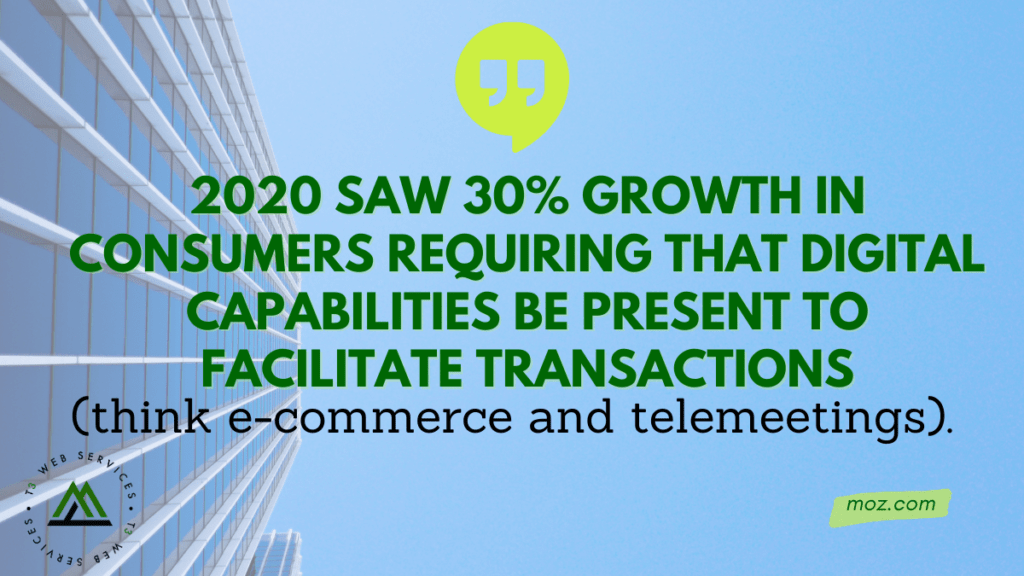

1. Essential local businesses take pride of place
One of my major takeaways from 2020 that I’ll be bringing with me into 2021 is that operating an essential business which fulfills the basic structural needs of a community is the wisest entrepreneurial strategy.
If you’re adjusting your business model and its inventory, opening a new business this year, or advising local entrepreneurs, learn to map community essentials and create a business plan that puts basics before luxuries.
2. Local business discovery is multi-channel
Getting found is the preliminary step to every local business transaction.
- Amanda found a restaurant while driving
- John looked at Google listings and reviews
- Niki needed a spot in close proximity to her workplace
- Garrett heard by word-of-mouth from a family member
Being there for the customer means being discoverable both online and offline, via vehicle, foot traffic, web-based local business platforms, and by word-of-mouth recommendations. Your visibility strategy for the year ahead needs to cover all these bases.
3. Local businesses can deliver multiple types of value
The local businesses you’re marketing have the best chance of success if you can unlock the secret of what patrons value most. These examples abound in our four anecdotes:
- Great selection — Amanda’s olive oil, Garret’s baked goods, John’s pho, Niki’s Irish coffee.
- High quality — clearly, all of these foods are extra delicious!
- Convenience — everyone wanted something nearby.
- Brand affinity — John wants a family-owned business, Garret wants employees to be cared for, Niki likes businesses that partner up with one another, and Amanda likes a brand that maintains quality without raising prices too much.
- Brand adaptability — all four brands made safety adjustments to keep serving the public.
This year, find out what your customers and potential customers value most, and make common cause with them.

https://moz.com/blog/2021-local-seo-success
How B2B Marketers Can Get Closer to Their Customers
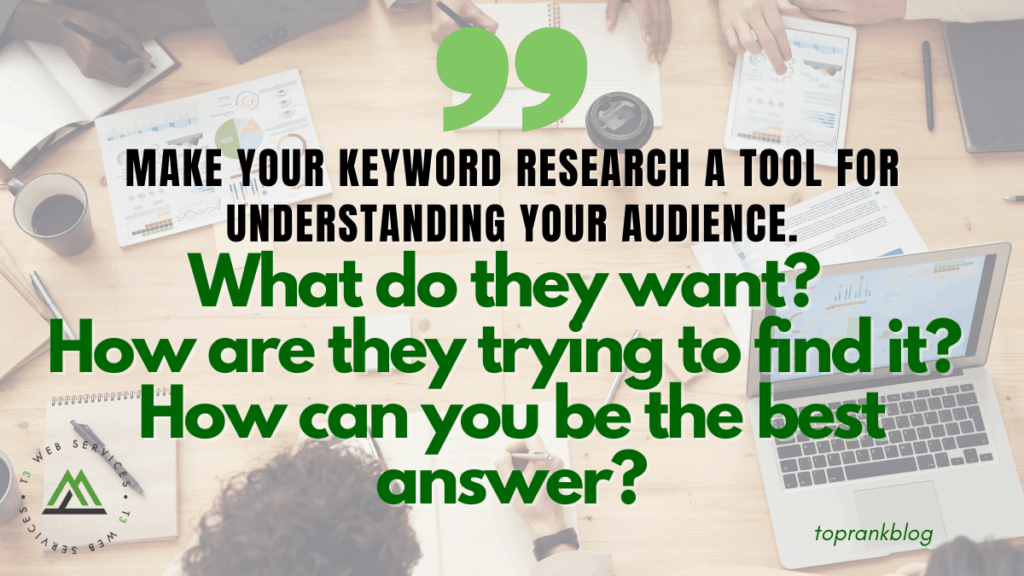

How do we hit the sweet spot of what our audience wants to hear, and what our brand is trying to get across? How do we give them that value that inspires reciprocity?
Here’s how B2B marketers can get closer to their audience in 2021.
#1: Ask the Sales Team
Let’s make 2021 the year we finally ditch the sales v. marketing mentality for good. Tighter alignment between the members of the Revenue Squad can only benefit everyone.
The sales team has a wealth of insights about your target audience. They’re the ones taking meetings, answering questions, talking one-on-one with members of the buying committee.
In short, sales can tell you where the sticking points are, where more persuasion is needed, and what type of content ultimately sways people toward a purchase. Tight alignment with sales will make your content more relevant to your audience and more useful for your sales team.
#2: Flip the Script on SEO
Are you still thinking of SEO as, “The way to get search engines to recommend our content?” If so, it’s time to update that mentality.
The most valuable function of keyword research right now is to determine what humans are searching for and how those queries are worded. It’s all about guiding content creation to match your audience’s demand, from the planning stages through execution.
The best SEO strategy is to create content that genuinely meets — and exceeds — your audience’s needs. If your content doesn’t meet a proven need, no amount of keyword stuffing or H1 tagging will grant it visibility.
Make your keyword research a tool for understanding your audience. What do they want? How are they trying to find it? How can you be the best answer?

https://www.toprankblog.com/2021/01/how-b2b-marketers-can-get-closer-to-their-customers/
You Can’t Predict Your SEO Clients’ Future – But You Can Estimate It!


When it comes to business scenarios, it means defining your benchmark before everything else so as to know how to allocate budgets, create stocks, and prepare for growth in certain areas.
The business scenario involves your objectives and how to go about them within expected or potential limits.
To help create business scenarios, SEO scenarios imply choosing the right inputs to delineate areas of maintenance, areas of potential growth, or where demand might shift, based on your client’s current search status.
Then, to connect the business and SEO scenarios, this can be your “playground” for building reliable estimations:
- In-depth keyword research, so your SEO team knows which keyword groups to tackle for which scenarios.
- A current Visibility status as the starting point.
- A business financial assessment – is there a tendency to grow, maintain the status quo, or even scale?
Set the Right Expectations from the Start
Speak Business
Whether you’re calibrating an existing strategy or tackling a new client, you need a reliable benchmark to set your scenarios against. That’s where the search Visibility metric comes in handy.
Think of it as a way to establish “market share” for your client against online competitors – calculated as an impression share on their targeted keywords weighted against search volume, it will highlight who the true competitors are when looking at non-brand organic traffic and where there’s room to grow for your client.
It highlights a probable future if you take into consideration all the factors influencing the current visibility.

https://www.searchenginejournal.com/seomonitor-estimate-seo-clients-future/390586/
How to Get More Views on YouTube: Strategy From a Top Creator
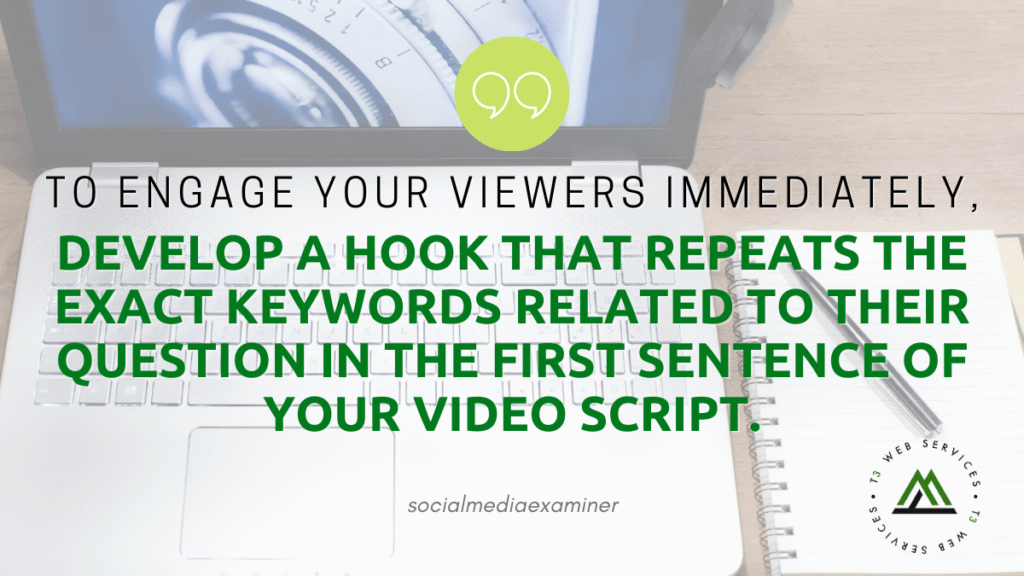

Why Is It Important to Keep People Watching Your YouTube Videos?
The reason for focusing on creating videos people will watch through to the end comes down to two things: serving your viewer and serving YouTube’s algorithm.
You need people to watch your videos so they see and receive the value you’re offering. If they don’t watch to the end of your video, they’ll miss out on your offer or message.
At the same time, if someone clicks on your video and doesn’t watch to the end, YouTube interprets that as a bad viewer experience and will stop serving your video in search and suggested results.
How to Structure a Successful Video: 5 Elements
The Hook: Keywords
When someone is searching for a solution on YouTube, there’s always some inherent anxiety involved when they’re deciding which video to click on. That anxiety hangs around until they know they’re watching the right video.
Your goal is to hook viewers immediately by letting them know they’re in the right place.
Using the exact keyword phrase is important because YouTube is now transcribing your videos and looking inside the video itself to figure out what your content is about. Your goal is to give YouTube everything you can to best place your content on the platform and put it in front of the right people on YouTube and often in Google search results as well.
The Intro: You and Your Content
After the hook, introduce yourself and your channel, and provide a bit more detail about the content you’re going to deliver.
Follow up with something relatable to anyone who has experienced the pains and problems of looking for video editing software. “If you’ve ever searched for video editing software or looked for video editing software on Mac, you understand that there are a lot of different options. So in this video, we’re going to break it all down for you. I’m going to share my top picks to help you decide which one is best for you.”
Or, “… in this video, I’m going to break it down and share my five top picks to help you decide which one is best for you.”
You’ve introduced yourself and your channel and you’ve told people how the content is going to be delivered so they can relax and watch your video with confidence.

55 Compelling Social Media Marketing Statistics You Need To Know For 2021
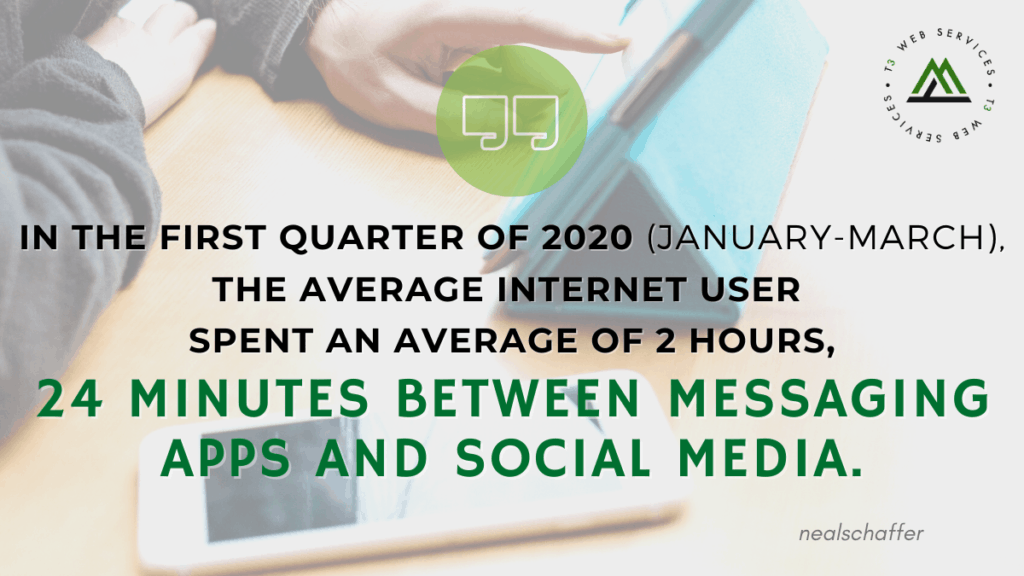

1. Between July 2019 and July 2020, social media users increased by over 10.5%. In raw numbers, this represents more than 376 million new users and a total social media reach of 3.96 billion.
2. Social media being used by 3.96 billion people represents just over half of the global population and represents 83.4% of internet connected people.
3. Experts believe that in five years, there will be 4.4 billion people on social media.
4. Internet users are expected to spend more than 1/3 of their internet time on social media. This total internet consumption adds up to 1.25 years. This provides many opportunities to reach customers.
5. The countries with the highest level of social media saturation are in Eastern Asia and Central America. Saturation rates in these countries stand at 84%. (Further reading: 5 Most Popular Platforms for Social Media Marketing in China)
6. European countries vary widely in social media use. Northern European countries come in first place with 79% of their population on social media. By contrast, Eastern Europe comes in last at 57%. Southern Europe (66%) and Western Europe (62%) are in the middle.
Social Media in the United States
Since the United States is both where most popular social networks were and created and home to the world’s largest economy, what goes on here is vital for most brands.
In addition, the US is home to Silicon Valley, the largest source of technological innovation in the world.
American internet-related statistics are also important because of the huge number of users concentrated in one place. Finally, Americans buy a lot of goods and services relative to their incomes.
8. In the US, at least 79% of internet users are on social media. The total number of social media users will likely reach 257 million by the end of 2023.
9. Most American adults don’t limit themselves to just one social network. In fact, 56% of Internet-connected adults have multiple social media accounts.
10. According to Emarketer, social media has a wide range of saturation based on age. Millennials lead the way with 90.4% being active users. For Gen X, that number is 77.5%, and Baby Boomers still participate at a rate of 48.2%.
11. Studies show that up to 81% of teenagers are active on social media.
12. Even when the entire adult US population is considered, social media is widely used. In fact, 68% of adults are on social media. There are few places which are so effective at reaching customers.

https://nealschaffer.com/social-media-marketing-statistics/
59 SEO Statistics You Need To See To Believe
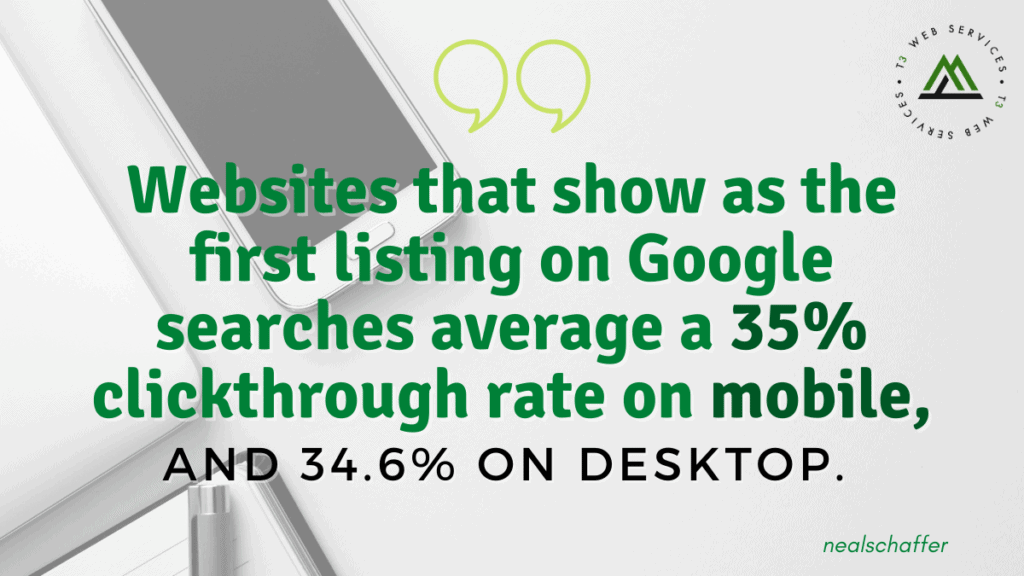

Why SEO is Important
For many consumers, the goal of running searches is to find relevant information on a topic. Whether that’s the latest recipes or a reputable car mechanic, people tend to check search engines early in most information searches. Other than social media, web searches are the most important source of data outside our immediate social circles. Everything from Yelp reviews to branded content are discoverable with proper SEO techniques. Otherwise, they might be hard to find.
1. 53% of website traffic results from organic searches. This is why the foundation of any digital marketing strategy should begin with SEO in mind.
2. Just as importantly, 33% of ecommerce visits are generated through organic searches. This is a pre-coronavirus number which I expect only increased this year with the pandemic.
3. For 94% of searches, users are more focused on organic results than paid ones. Paid Per Click (PPC) can be an extremely profitable type of advertisement, but similar to the trends we see in social media marketing and elsewhere, people are getting better at tuning out advertisements.
4. For 90% of B2B product researchers, the purpose of their search is to choose which products to buy. SEO might just be even more important for B2B marketing as buyers look for information to make the best purchasing decision possible – and lower their own risk of making the wrong choice.
5. Among 80-90% of shoppers, online reviews are consulted before making purchases. This stat proves what we all should know by now.
6. Nowadays, up to 70% of product research is done online, and this is done before sales personnel are contacted. If we want to control the research phase, we need to be discovered in search engines through SEO.
7. According to some studies, over 50% of Internet users find a new product or company as a result of their search. SEO levels the playing field for every company, famous or not, to be found.

https://nealschaffer.com/seo-statistics/
21 Smart Google SEO Tips for 2021
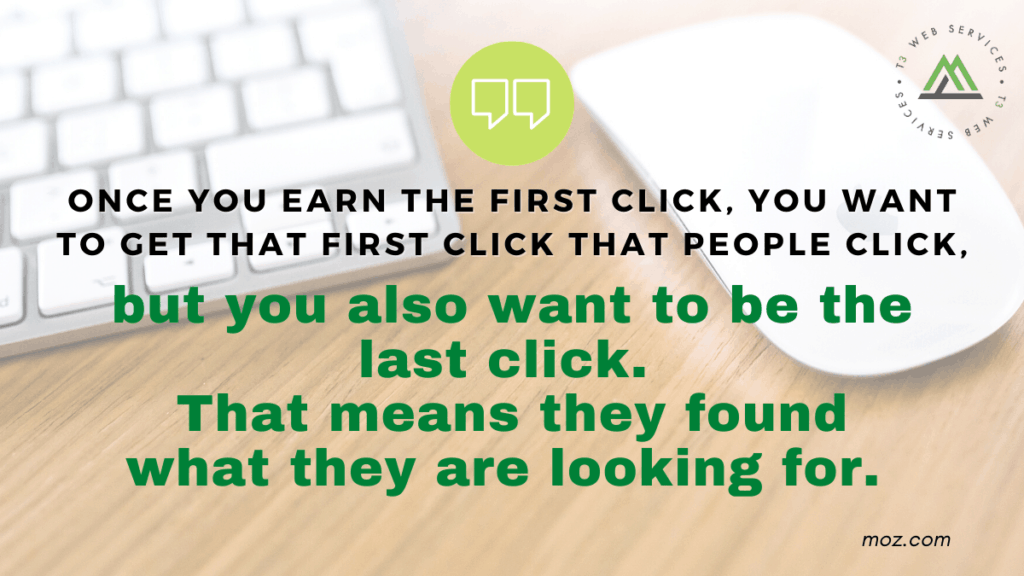

1. Favicon optimization
First, favicon optimization.
Now I’m surprised more people haven’t talked about this in 2020. Google displays favicons in mobile search results, and they can influence your click-through rate if they’re high contrast, if they’re visible or not visible. Having a good favicon can make a few percentage points difference, very minor, but it does make a difference if you can get it right. Aaron Wall, SEO Book, wrote one of the very few posts about that.
2. Breadcrumb optimization
While we’re optimizing our favicons, let’s take a look at breadcrumb optimization. Google displays breadcrumbs in both desktop and mobile search results. They can be keyword-rich breadcrumbs, which can influence your click-through rate. Now Google gets their breadcrumbs from a lot of places. That can be your URL, your schema markup, your actual breadcrumbs on the page.
What you want to do is make sure Google is displaying the breadcrumbs that you want them to display, using those keywords that you choose. The best way to do that, make sure that you have breadcrumbs actually on your page with links, that you’re using schema markup. Ideally, it would match your URL structure, but that isn’t always necessary. So a great breadcrumb optimization audit.
3. Meta descriptions
Let’s optimize those meta descriptions. This is so old-school SEO. But a recent study shows that 30% of websites don’t even use meta descriptions. Now that’s understandable because another study shows that 70% of the time, Google will rewrite the meta description, usually because it’s not using the keywords that the user is searching for. But if we write a well-crafted meta description, it can compel users to click, and that means using keyword-rich descriptions that people are actually searching for, so when Google does use your meta description, it’s encouraging those clicks and acting as marketing copy for your website.



Leave a Reply